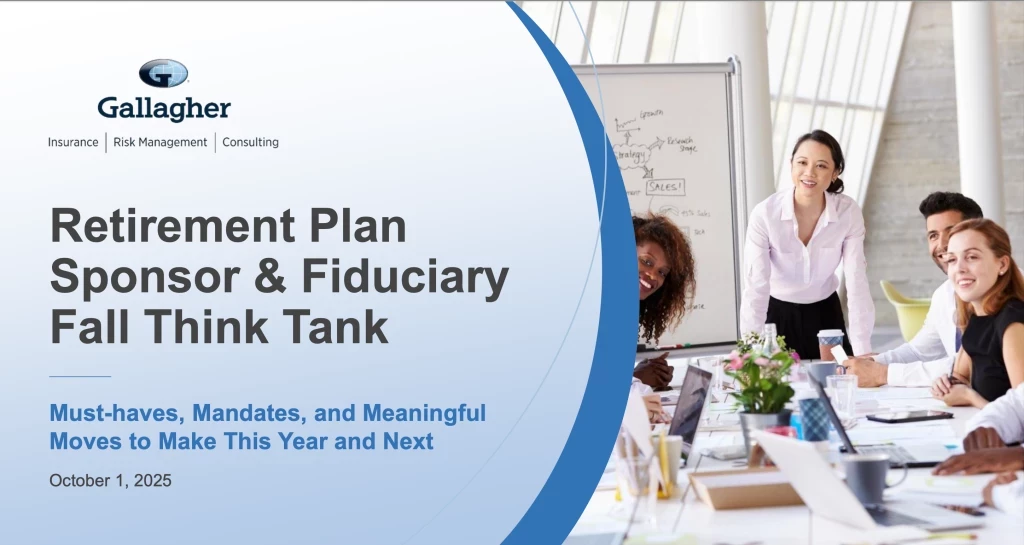Employee Engagement And Experience For The Post-Covid World
Add bookmark
Introduction
Employee engagement and experience is the cornerstone
of any Human Resources strategy. Everything HR leaders
touch – from the hiring process to performance reviews and
succession planning – relates to the experience of workers.
Therefore, HR carries the heavy burden of ensuring job
satisfaction, which is the key to retention.
The pandemic accelerated change and put a spotlight on
cracks in the traditional workplace. Companies recognized
they could have all remote or hybrid structures, which brought
a new set of challenges when it came to engagement.
If there was ever a time that employers could rest on their
laurels, it is over. Workers have been quitting their jobs in
droves in what is known as the Great Resignation. As a
result, many industries are facing a historic labor shortage,
not to mention record-high inflation. HR leaders are looking
in the mirror to assess what is going wrong with both
recruiting and retention.
In addition, Generation Z is joining Millennials, Generation X,
and Baby Boomers in the workforce. It is the first time
that four generations are collaborating in the workplace.
Gen Z has its own set of expectations that is turning
employee engagement on its head. Now, nothing will ever
be the same.
Recruits and employees have leverage. Reckoning
with what the world has faced over the last two years
requires a solid team that can work well together.
Therefore, the first step in this journey is re-engaging
employees and reshaping their experiences to transform
work culture. Essentially, HR leaders are redefining the very
concept of work.
They are leading the charge by emphasizing their renewed
commitment to employer brand and specifically their
employee value proposition (EVP). They are aiming to
do more than shout from the rooftops what they think
employees and recruits want to hear. Instead, they are
digging into available data and listening to workers to make
significant change. Their new mission is to treat employees
like customers to win them over, make them loyal, and ensure
they contribute to the team’s success.
Engaging with a Hybrid Workforce
Employee engagement is a top priority of Human Resources.
The U.S. Bureau of Labor Statistics reported that 4.3 million
Americans quit their jobs in January 2022, which continued
a trend that began the previous year. McKinsey reports
that employees who express they are having a positive
experience at work have 16 times the engagement level of
others, and they are eight times more likely to stay at the
company. As a result, engagement and experience has
taken on a new level of importance.
At the same time, however, the game has changed. The
pandemic sparked the realization that some jobs could be
done exclusively from home. During the week of March 9, the
average office occupancy rate across 10 large U.S. cities
was only 40.5%, which was still the highest since December,
according to Kastle Systems.
“We recognize our employees
really appreciate having the
flexibility to manage work and life
responsibilities. A hybrid approach
means they have the best of both
worlds - connection and flexibility.”Todd Reeves
SVP, People Operations & Technology
Expedia Group
Many employers are opting for hybrid options. Facebook,
Google, Apple, and Microsoft have all brought employees
back into the office for at least some time each week. Others
have gone all remote or are at least giving employees the
choice to work exclusively from their homes. During the
pandemic, people moved. Companies hired those in distant
lands. Today, some workers are living in faraway places and
can’t easily return to company headquarters.
Engaging people across geographies, time zones, and
computer screens adds another layer to the challenges
of HR leaders. Expedia is going hybrid and views this as
an opportunity.
Opening the Lines of Communication
Like many HR leaders, Reeves emphasizes active listening,
which refers to the practice of asking employees what they
think and need and then acting on it. Surveys, focus groups,
or one-on-one meetings between managers and workers
are ways to facilitate opportunities for active listening.
The conversation is not limited to middle management.
Senior executives and the C-suite have a role, too. At Atrium
Health, for example, executives conduct what they call
“rounding.” A pair of senior executives visit employees in
departments outside their reporting structure. They bring
a cart of treats and bottles of water, and they talk to the
workers about their individual experiences. They ask about
what they can do better and how they feel about their jobs.
In the next step, the executives debrief one another about
what they have learned. Then, department heads try to
solve any problems, recognize stand-out employees, and
track any issues that require more concentration.
“It’s really changing the tone of the conversation and how
people are engaged at work,” says Vishal Bhalla, SVP Chief
Human Resources Officer and Chief Experience Officer at
Atrium Health. “Now, that is engagement!”
Companies are aiming to be more transparent to gain
trust. During the pandemic, organizations including
IBM, began having leaders answer employee questions
regularly. Sometimes, they must be honest about limitations.
For example, Bhalla knows compensation and benefits
packages are a big draw for top talent. Many workers
express a desire for higher pay in those “rounding”
conversations.
When Bhalla’s team starts brainstorming and someone
brings up higher pay, he explains that they are already
paying as much as they can afford. So, he asks them to
innovate, think outside the box, and find other ways to show
they value employees.
Showing Empathy and Care
As workers allowed their colleagues into their homes via
Zoom and shared their fears during the pandemic, they
sought the right mix of care and confidence in their leaders.
Now that people can process all that has happened, they
don’t want to go back to the old way of doing things. They
expect empathetic leaders who take a vested interest in the
welfare and wellbeing of individual employees.
HR leaders often repeat the saying that people quit
managers, not jobs. In fact, Gallup reports that 70% of
variance in team engagement is determined solely by the
manager. Therefore, these demonstrations of care can help
employers stand out. It is a future of work trend that is taking
shape now.
“I believe there is going to be a shift to focus more on overall
employee wellbeing, which takes a more holistic approach
to how an organization engages its people,” says Timothy
Olaore, Director of Leadership Residency and Internship
Program at Adventist Health and a Speaker and Producer
at Mr. Meaningful Work. “Companies will start integrating
policies and practices that incorporate physical, mental,
emotional, spiritual, and financial wellbeing. Leaders will need
to become well-versed in how to recognize which wellbeing
factor – or combination of factors – individuals on their team
are experiencing and refer them to the appropriate resource.
Ideally this resource is within the organization, but it very well
may exist externally.”
A case study from University Federal Credit Union (UFCU) certainly bolsters this idea of focusing on the individual and personalizing the Human Resources experience for employees. While many employers were trying to win the talent war, UFCU aimed to retain the employees it already had.
To begin, UFCU practiced active listening and reshaped its
communications. Executives sent out targeted messages
that they delivered in a variety of ways, including blogs,
videos, and town halls. Each senior leadership team member
wrote five handwritten thank you cards per week and mailed
them to employees’ homes.
Also, senior leaders sat with call center workers for 90
minutes while they were on the phone, so they could see
firsthand limitations of their system and employee needs. HR
leaders conducted stay interviews twice per year.
Executives conducted well checks with new hires three to six
months into their tenure. Employees checked in with managers
at established, dedicated times. Throughout the pandemic,
leaders conducted branch visits to give workers who could not
work from home a chance to voice concerns and fears.
Beyond this increase in communication and transparency,
UFCU showed compassion. The team had opportunities
to participate in community service. The employer sent a
gift card for $150 meal delivery to employees, who were
struggling emotionally or experienced health issues. In
addition, UFCU opened two zen rooms, replete with virtual
reality stress reduction tools, for on-site employees.
As a result, UFCU saw its highest employee engagement
scores ever and earned engagement scores in the top 2%
worldwide, which resulted in winning Gallup’s Exceptional
Workplace Award in 2021. In addition, the organization
reduced turnover by 5% and by as much as 15% in
traditionally high-turnover departments.
Engagement is dependent on communication. Employees who receive daily feedback from their manager are three times more likely to be engaged than those who receive feedback once a year or less, according to Gallup. While surveys are still an important part of HR assessment, many leaders are turning those conversations into more regular one-on-one meetings or small focus groups. Gathering feedback is more of a continuous conversation nowadays.
Another way to show care for individual employees is to
promote their career growth and prepare them for the future
of work. For example, employees told Expedia that they
wanted professional development. In response, the company
is building a career hub, where employees can enter the skills
they have and the ones they’d like to attain, so they can be
matched with coursework, mentors, rotational opportunities,
and internal job postings.
“We’re also focused on providing coaching and guidance to
managers on using our quarterly performance conversations
as opportunities to discuss how their employees can
continue to grow their careers,” says Reeves. “And we’re
looking at our internal processes, such as how internal
candidates apply for and interview for opportunities within
the company to make it a smoother and easier experience.”
This type of integrated learning and development is a trend
in HR and one that benefits individuals and the company.
After all, helping employees gain skills that they can apply on
the job can increase productivity, efficiency, and success. It
also helps organizations develop pipelines of talent, so they
don’t always have to hire externally.
This focus on the individual is evident in how companies
are approaching work-life balance initiatives. Some are
imposing rules about when workers and managers can send
emails or call people. Others allow flexibility for people to
go to a doctor’s appointment or pick up their kids at school.
The pandemic forced employers to realize people had a
life outside work, and everyone reprioritized. In fact, 61% of
respondents to a Gallup poll said better work-life balance
and personal well-being were top considerations when
seeking a new job.
“Companies will start integrating
policies and practices that
incorporate physical, mental,
emotional, spiritual, and financial
wellbeing. Leaders will need to
become well-versed in how to
recognize which wellbeing factor -
or combination of factors - individuals
on their team are experiencing and
refer them to the appropriate source.”
Timothy “Mr Meaningful Work” Olaore
Director of Leadership Residency and Internship
Program at Adventist Health.
Matching Values
As people’s priorities shifted during the pandemic, they
started to think about the legacy they’d like to leave. Many
decided that they wanted their work to be more meaningful
and for their employers to care as much about their
communities as they do their bottom line.
In fact, six in 10 of those changing jobs said they were
seeking a better fit between their own and their employer’s
corporate values, according to the Edelman Trust
Barometer. Certainly, opportunities to perform community
service or partner with locals are welcome. But employees
want more.
In the wake of George Floyd’s murder and the increase in
participation in the Black Lives Matter Movement, employees
wanted their bosses to take a stand and use the power of
their platforms and pocketbooks to make a difference.
Diversity, equity, and inclusion (DEI) strategies rose on the
list of priorities. More than 40% of respondents to a Gallup
survey said they were seeking a diverse organization that
was inclusive of all types of people in their next employer.
Employee activism has increased, and workers want to
know that their bosses truly have their back. And they are
holding them accountable when they don’t. Employees at
many companies put pressure on leaders to stop doing
business in Russia when it invaded Ukraine in February 2022,
for example.
The point is that recruits and employees want to find a good
match with their values. It is forcing leaders to think more
critically about the morality and ethics of their business
decisions. Once upon a time, corporate entities could be
silent or at least appear apolitical. Those days are over.
Leaders must contend with internal and external moral
dilemmas as they arise or face the wrath of their employees.
Doing the right thing is no longer optional.
The Future of Work
When people reference the future of work, many might
think about technology like artificial intelligence (AI) and
automation. But the future of work is also about how to
define work, what the workplace looks like, where and when
employees work, and who the workers are.
At the heart of this conversation is employee engagement
and experience. After all, it is what sustains teams, sparks
creativity, and catapults a business to succeed. The future
of work has arrived, and employees are in the driver’s seat.
They are demanding everything from better pay to more
professional growth. They want employers to care about
them as individuals and tend to their communities as well.
HR leaders are taking the reins and transforming work.
By putting an emphasis on active listening, improved
communication, and initiatives driven by feedback and
analytics, they are making the workplace employee-centric.
In that way, the customer is being well-served.
This is only the beginning because changing mindsets
doesn’t happen overnight.
“I feel like when companies look at engagement, they see
it from the perspective of, ‘How can we make the employee
feel better about the company?’” says Olaore. “I think the
attention needs to be shifted to, ‘How can we make the
employees feel better about themselves and how they
uniquely contribute to the success of their team and the
larger organization?’”
Some organizations are already asking this question,
promoting the individual, and responding to employee’s
needs. HR leaders who continue to respond to employees,
communicate with them, and respect their time and personal
wellbeing will win this great talent war.
Resources
McKinsey, This time it’s personal: Shaping the ‘new possible’
through employee experience
https://www.mckinsey.com/business-functions/peopleand-
organizational-performance/our-insights/thistime-
its-personal-shaping-the-new-possible-throughemployee-
experience
Kastle Systems
https://www.kastle.com/safety-wellness/getting-americaback-
to-work/
Gallup, How Influential Is a Good Manager?
https://www.gallup.com/cliftonstrengths/en/350423/
influential-good-manager.aspx
Gallup, What Is Employee Engagement and How Do You
Improve It?
https://www.gallup.com/workplace/285674/improveemployee-
engagement-workplace.aspx
Gallup, The Top 6 Things Employees Want in Their Next Job
https://www.gallup.com/workplace/389807/top-thingsemployees-
next-job.aspx
Edelman Trust Barometer
https://www.edelman.com/sites/g/files/aatuss191/
files/2022-01/2022%20Edelman%20Trust%20Barometer%20
Global%20Report_Final.pdf




















